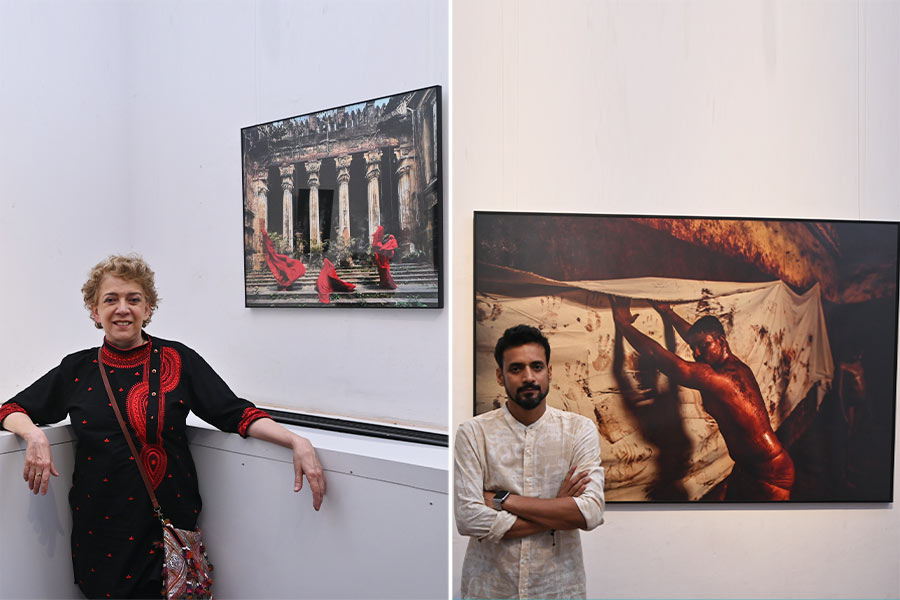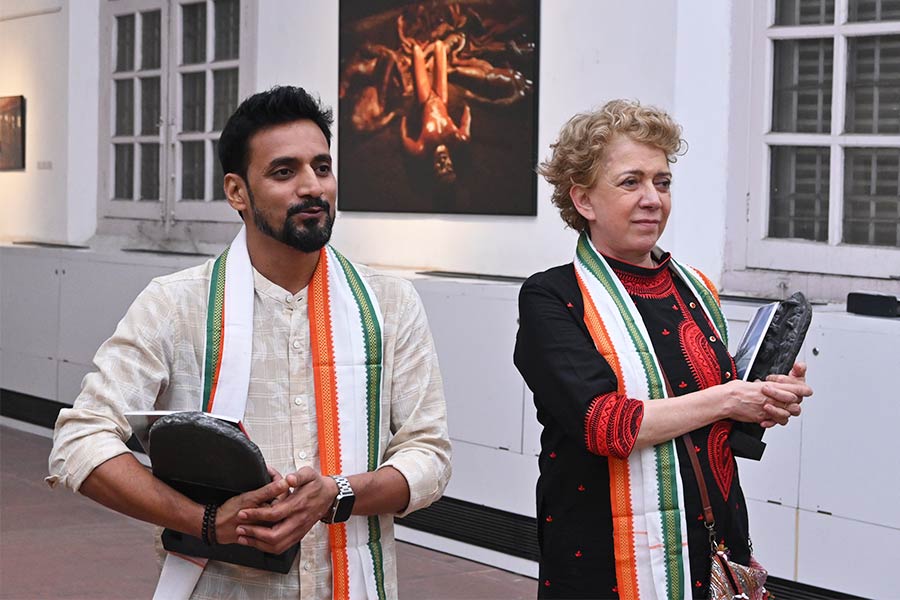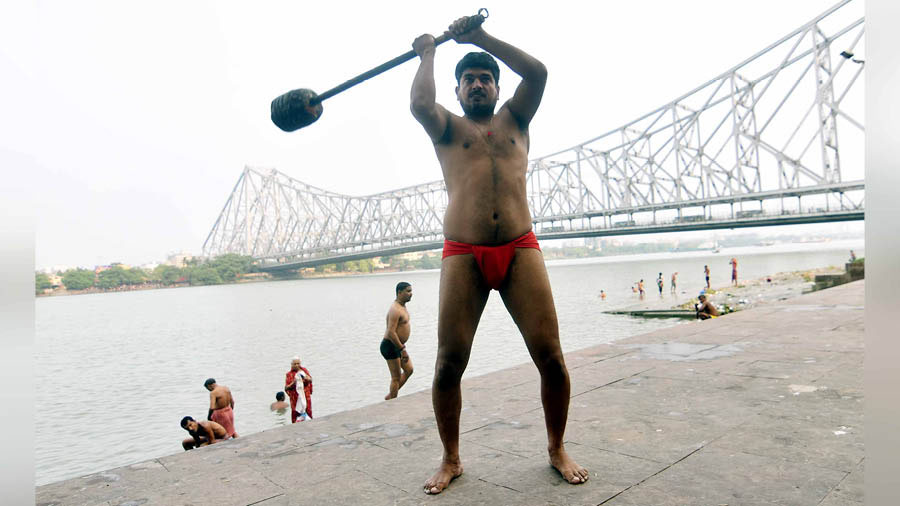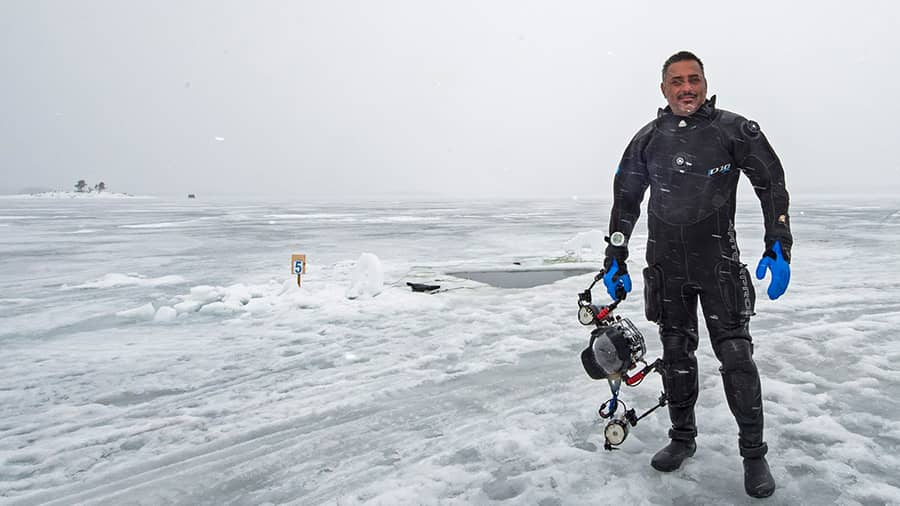The fragility of our world and the dwindling of traditional Indian wrestling were the apparently disparate themes of a unique collaborative exhibition of photographs at the Indian Museum recently. The exhibition, titled ‘Endangered Spaces’, brought together the works of Paris-based French photographer Helene Guetary and Mumbai-based Indian photographer Jayesh Sharma.
Besides the individual works of the artists over the past few years, the exhibition featured a collaborative video conceptualised by the two photographers, who had first met two years ago through Abhishek Basu of the Basu Foundation for the Arts.
Guetary’s featured project, ‘Zeitgeist’, is a series of photographs whose aim is to bring attention to the “fragility of our world”. On the other hand, Sharma’s project, ‘Kushti: The Lost Children of Postmodernism’, brings attention to the diminishing of traditional wrestling in India. The exhibition was curated by Anurag Kanoria, director of The Great Eastern Home.
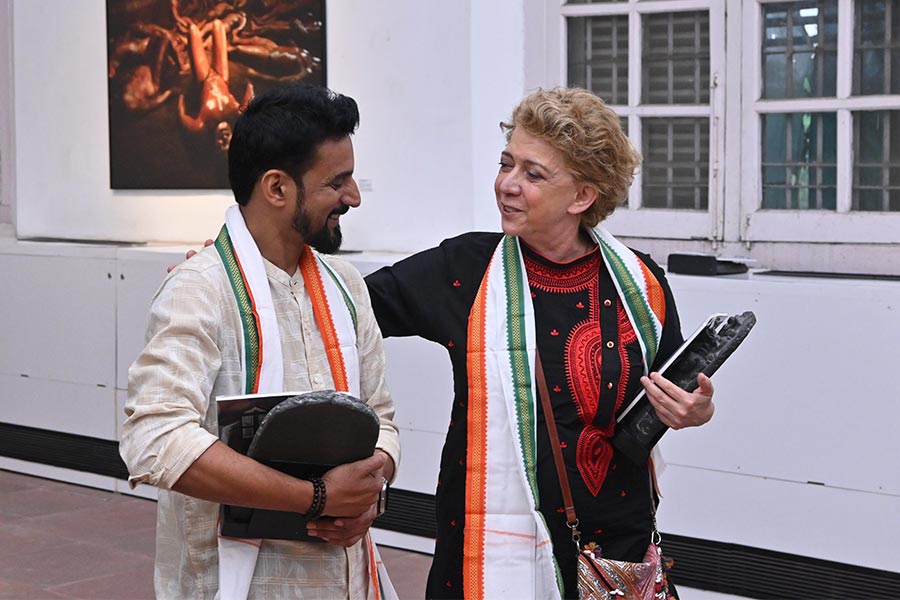
Sharma and Guetary first met a couple of years ago
Even though there are several striking differences in the projects of Guetary and Sharma, what unites them is their underlying theme, which critiques rapid globalisation. “He (Sharma) tries to concentrate the viewer’s attention on the disappearing cultural practices, while I try to do the same for the disappearing beauty on this planet,” said Guetary. While Sharma’s work opens a window into a form of masculinity peculiar to wrestling and India, Guetary’s photographs can be interpreted as gender-fluid. Guetary has shot across the world, including in Italy, France, Greece, Spain, the US and India, whereas Sharma has located his photographs in Uttar Pradesh, Madhya Pradesh and, especially, Maharashtra, which has “one of the oldest akhadas in India”.
How Sharma got the inside view of akhadas
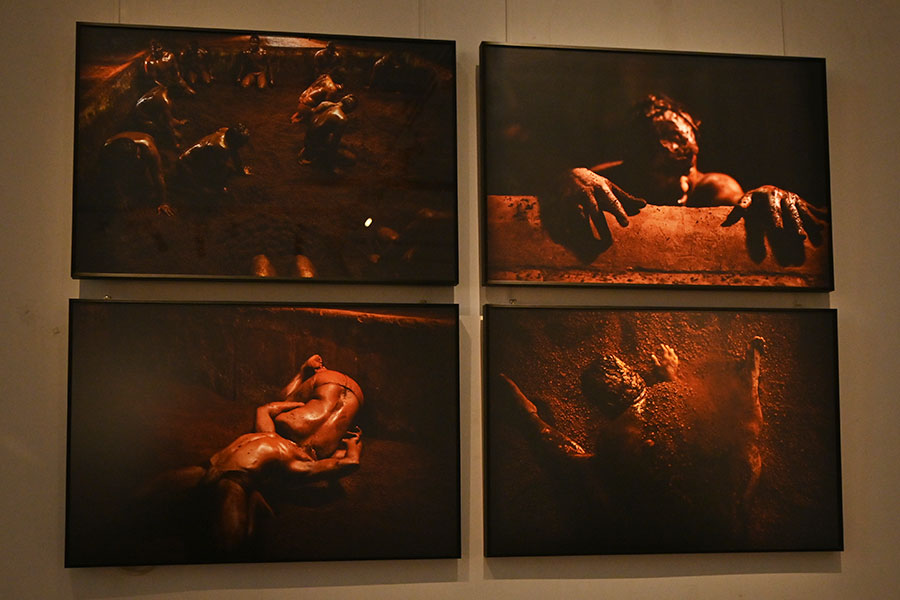
Photographs from Sharma’s ‘Kushti’
“I’ve been working on this project for the past seven years, documenting spaces where kushti is still practised and the concept of akhadas still exist,” said Sharma. It is extremely difficult for outsiders to enter into these cramped wrestling spaces, let alone document them. Perhaps it was Sharma’s efforts to emotionally engage with the wrestlers (or pahalwans) and understand the intimacy of the space that made the wrestling community accept his presence as well as that of his camera.
Sharma grew up in Varanasi, where he was based before moving to Mumbai. Sharma feels he can visualise wrestling as something beyond just sports because of his upbringing in Varanasi. “Wrestling is good for spiritual as well as mental health. Every time you connect with mitti, it’s a medicine in itself.” Sharma was in awe of the amount of “faith” wrestlers have in their lifestyle, leading “a monastic life with years of traditional upbringing and ritualistic disciplines”, all of which is gradually fading into oblivion.
One of Sharma’s exhibited photographs is of the interiors of an old, traditional akhada in Varanasi that no longer exists. “The place has been destroyed. New apartments are being made in its stead. This is the last photograph there,” said Sharma.
Maria Claudia Marini, the deputy consul general of Italy in Kolkata, was among the visitors at the inauguration of the exhibition on April 12. In relation to Sharma’s work, she pointed at one of his photographs and referred to how she can detect parallels with legendary Italian paintings. “My mind immediately went to Caravaggio after seeing these powerful body forms,” remarked Marini, to which Sharma replied that the “male gaze” is a significant theme in his photographs, too.
The ‘poetic resistance’ of Guetary

Photographs from Guetary’s ‘Zeitgeist’
Guetary’s ‘Zeitgeist’, on the other hand, is a witty representation of the much-talked about pop-culture idea of a ‘red flag’. She represents “poetic resistance” in her art, feeling alarmed at the present state of the world. The inception of her project happened when the world was hit by the Covid-19 pandemic. “It came to me like a vision — there were red characters that would appear in places with tension, such as oceans or other water bodies, where ecosystems like mangroves or forests are being affected,” said Guetary.
As part of her project, Guetary travelled to parts of Kerala and the Sunderbans to document the pristine backwaters and mangroves before they vanished. Keeping the situation of our planet in mind, our depleting natural resources can be easily understood in the context of “endangered spaces”, argued Guetary. Even though Guetary mostly focuses on the fleeting natural world, she also incorporated man-made architecture in her photographs at the exhibition, including that of a dilapidated stepwell in Rajasthan.
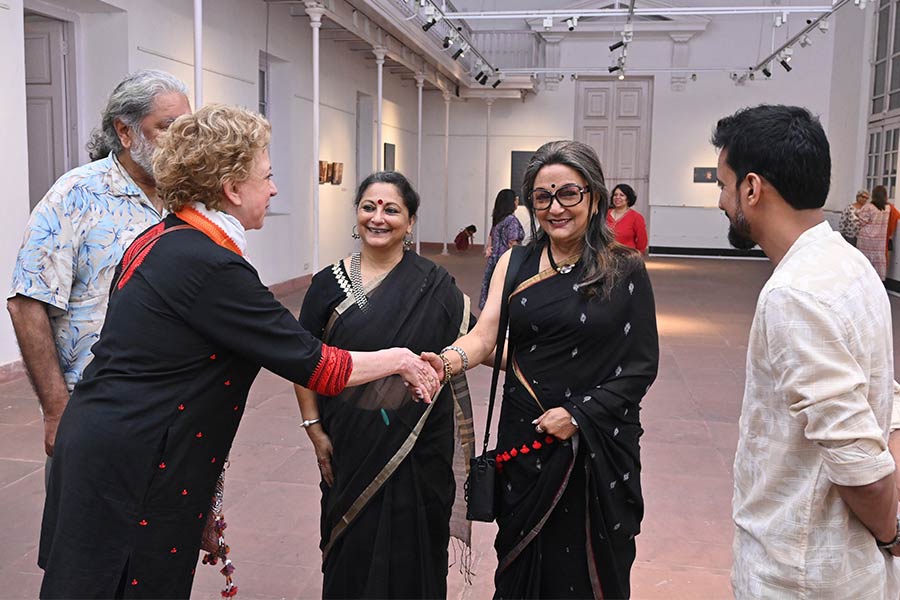
Aparna Sen interacting with Guetary and Sharma
Among those impressed by the exhibition, which was open to the public between April 13 and April 16, was filmmaker and actress Aparna Sen, who marvelled at the “amazing collaboration” between the photographers. ‘Endangered Spaces’ moves to Mumbai and the Nine Fish Art Gallery, starting May 3.
